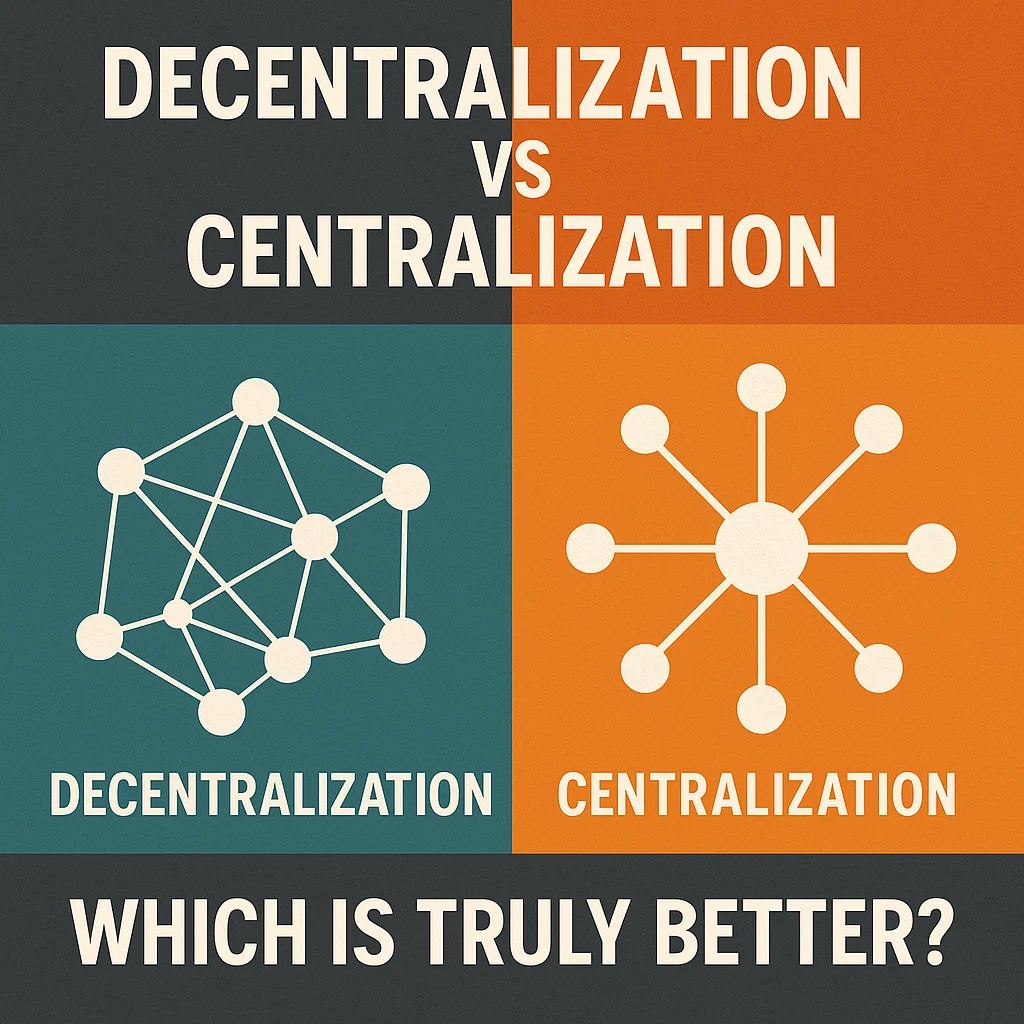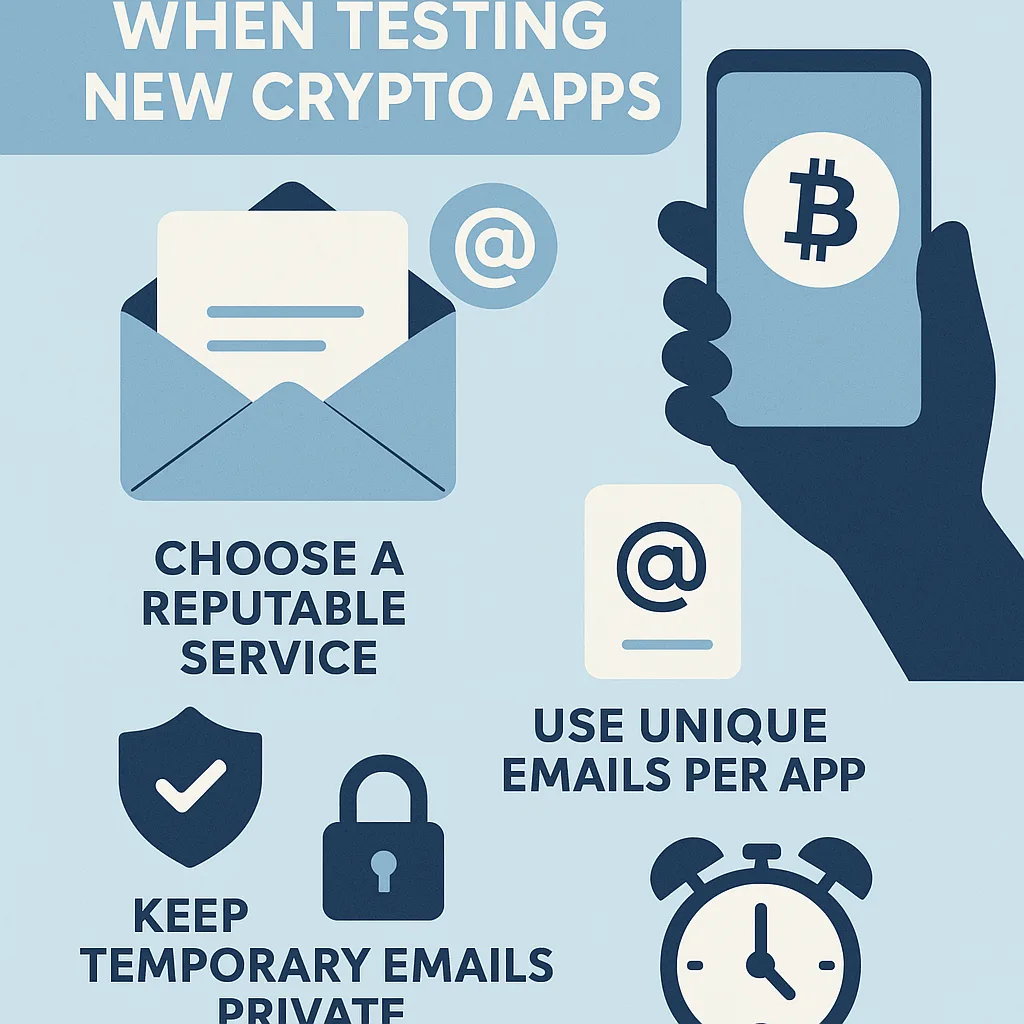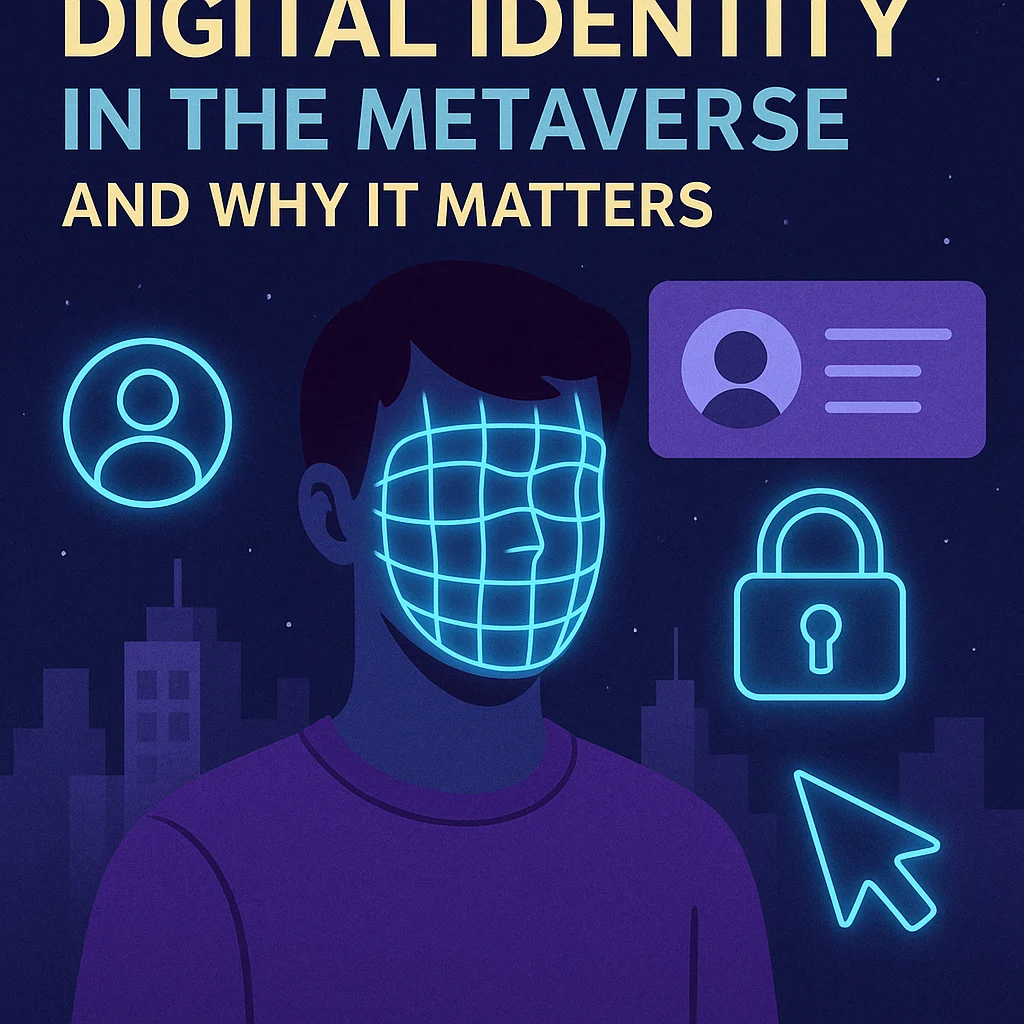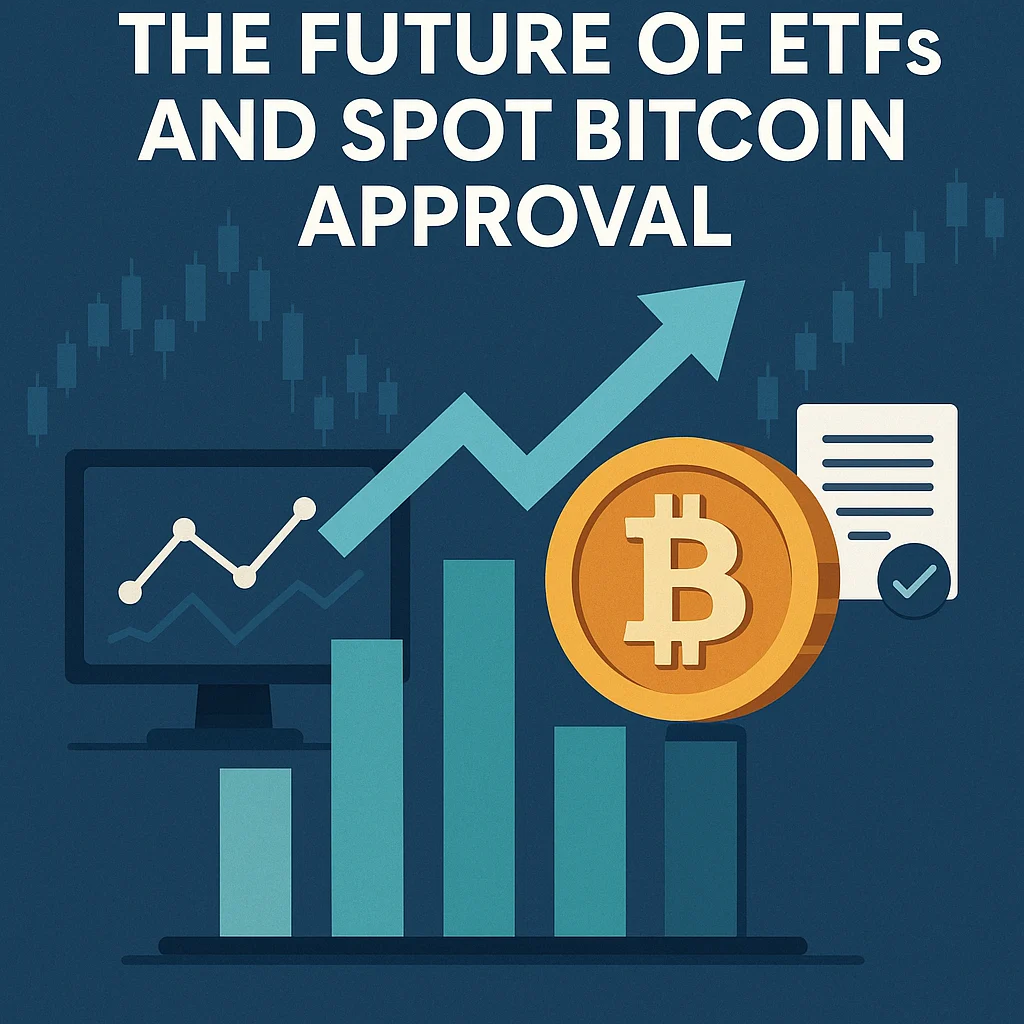Decentralization vs. centralization is a debate that has come to define a lot of the innovation, ideology, and disruption in technology and finance as the digital world keeps changing. The struggle between these two diametrically opposed models influences governments, businesses, and the daily digital lives of billions of people, influencing everything from how we handle data to how we store money.
As blockchain, Web3, decentralized finance (DeFi), and cryptocurrencies have grown in popularity, the term "decentralization" has come to represent liberty, openness, and community empowerment. Centralization, on the other hand, is still the mainstay of conventional systems because of its effectiveness, control, and scalability.
But which is truly better?
In order to assist you in determining which paradigm best suits our increasingly digital society, this blog delves deeply into the subtleties of both models, examining their advantages, disadvantages, and applications.
What Is Centralization?
Systems that concentrate authority, control, and decision-making in one organization or small group are referred to as centralized. A core entity (such as a government, business, or administrator) controls operations, rules, and information flow in centralized systems.
Examples:
-
Banks and traditional financial institutions
-
Big Tech platforms like Google, Facebook, and Amazon
-
Governments and national infrastructures
-
Centralized cloud storage (e.g., Google Drive)
Benefits of Centralization:
-
Efficiency and Speed: Central decision-making enables quick responses and streamlined processes.
-
Clear Accountability: It's easier to assign responsibility and implement rules.
-
Resource Optimization: Central entities can allocate resources based on need or priority.
-
Security Control: Managed security protocols can be consistently enforced.
Drawbacks:
-
Single Point of Failure: If the central node is compromised, the entire system may collapse.
-
Data Privacy Concerns: User data is often stored and monetized without full transparency.
-
Censorship Risks: The controlling body can restrict access or silence voices.
-
Lack of Autonomy: Users have little control over how the system operates or evolves.
What Is Decentralization?
Decentralization distributes control and authority across a network of nodes, individuals, or organizations. Decisions are made collectively, and systems are designed to operate without reliance on a single governing body.
Examples:
-
Bitcoin and other cryptocurrencies
-
Peer-to-peer file sharing (e.g., BitTorrent)
-
Decentralized Autonomous Organizations (DAOs)
-
Blockchain-based apps (DApps)
Benefits of Decentralization:
-
Censorship Resistance: No central authority can unilaterally block or alter data.
-
Enhanced Privacy and Ownership: Users control their data, identities, and assets.
-
Greater Transparency: Open-source protocols and public blockchains allow verification of actions.
-
Resilience: No single point of failure; the system can function even if parts are compromised.
Drawbacks:
-
Slower Consensus: Reaching agreement across many parties can be time-consuming.
-
Scalability Issues: Some decentralized systems struggle with high volumes and speed.
-
Complex Governance: Coordinating and incentivizing participants can be challenging.
-
Fragmentation: Competing standards and forks can dilute community efforts.
Real-World Applications: When Each Model Works Best
1. Finance and Payments
-
Centralized Model: Fast settlement is provided by traditional banks within regulated networks. Although regulations protect consumers, they can also restrict access and fees.
-
Decentralized Model: Peer-to-peer, international payments are made possible by cryptocurrencies like Bitcoin. Risks include lack of insurance and volatility, but there are no middlemen.
Verdict: Centralization is better for stability and compliance; decentralization wins in inclusion and censorship resistance.
2. Social Media
-
Centralized Model: Although social media sites like Instagram and Twitter provide smooth user experiences and content moderation, they are criticized for speech control and data harvesting.
-
Decentralized Model: Although they lack scale and monetization options, protocols like Mastodon or Lens Protocol grant users data ownership and freedom of speech.
Verdict: Decentralization is promising for speech freedom, while centralization remains dominant due to network effects.
3. Governance and Decision-Making
-
Centralized Model: Top-down decisions are made quickly by corporations and governments. Effective, but sometimes authoritarian or opaque.
-
Decentralized Model: Communities are empowered by DAOs and voting platforms. more democratic and transparent, but slower.
Verdict: Decentralization enhances fairness but needs strong mechanisms to avoid chaos.
4. Data Storage
-
Centralized Model: Reliable and scalable storage is offered by services like Dropbox and Google Cloud. Data can be misused or lost.
-
Decentralized Model: Arweave, Filecoin, and IPFS provide safe, unchangeable storage on worldwide nodes.
Verdict: Centralized for performance, decentralized for permanence and privacy.
Blockchain as a Bridge Between Both Worlds
Modern blockchain technologies are finding ways to combine the best of both models.
Examples:
-
Layer 2 solutions like Optimism or Arbitrum improve Ethereum’s scalability while maintaining decentralization.
-
Hybrid blockchains like Polkadot or Cosmos allow for interoperable decentralized networks with some centralized coordination.
-
Enterprise chains (e.g., Hyperledger) offer blockchain benefits in a controlled setting.
Philosophical Divide: Freedom vs. Control
At its core, the decentralization vs. centralization debate isn’t just technical—it’s ideological.
-
Centralization advocates value order, efficiency, and governance.
-
Decentralization advocates champion individual freedom, self-sovereignty, and resistance to tyranny.
The right model often depends on the context, but combining both can deliver the balance society needs—efficient systems that respect user rights.
The Future: Toward “Progressive Decentralization”
Progressive decentralization is a new trend in which projects begin with centralized control (to guarantee speed and cohesiveness) and then progressively decentralize ownership, governance, and infrastructure.
Projects like Uniswap, Aave, and ENS have successfully made this transition, balancing innovation with community trust.
This model allows:
-
Strong foundations in early stages
-
Community alignment over time
-
Avoidance of governance chaos or stagnation
Final Thoughts
So, which is truly better—decentralization or centralization?
The answer isn’t binary. It depends on your priorities:
-
Need speed and compliance? Centralization wins.
-
Want privacy, freedom, and resilience? Decentralization is the way.
Progressive decentralization is a new trend in which projects begin with centralized control (to guarantee speed and cohesiveness) and then progressively decentralize ownership, governance, and infrastructure.
In the digital age, the choice isn’t centralization or decentralization. It’s choosing the right balance for the right purpose.




Leave a Reply